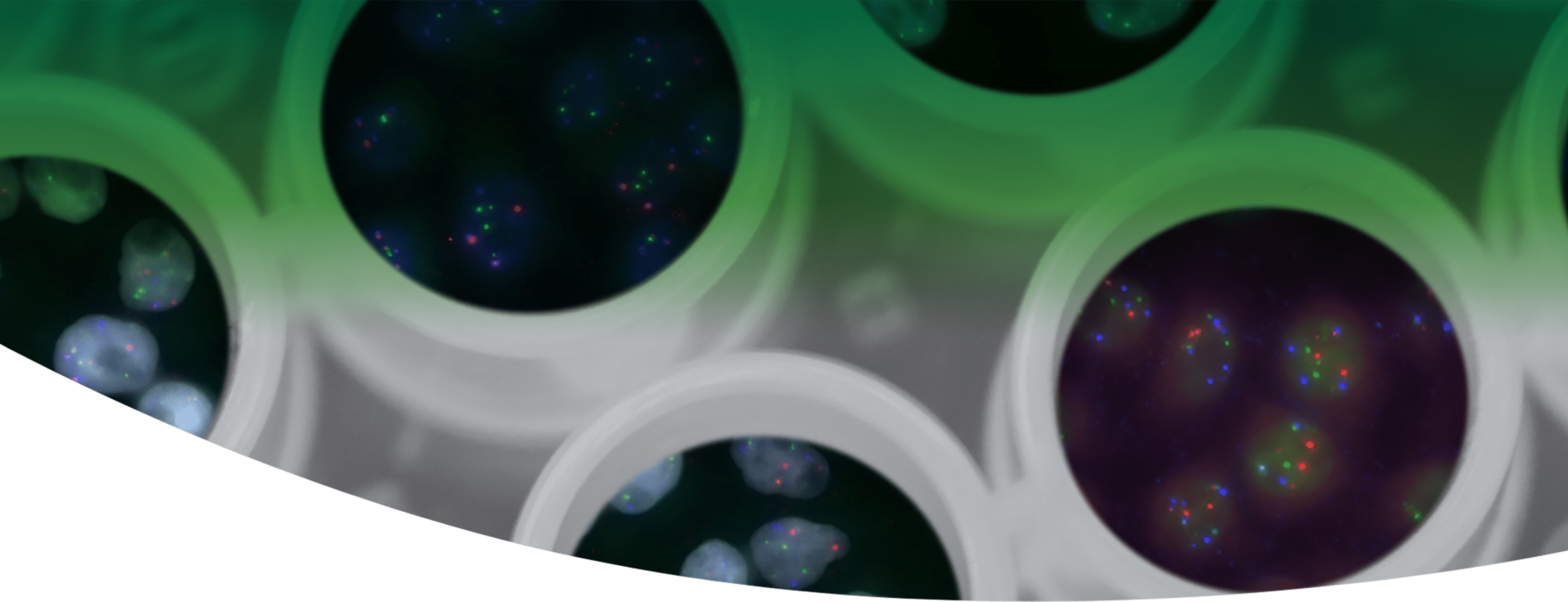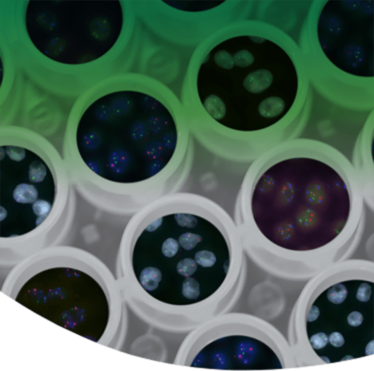Whether it’s addressing unmet need for blindness diseases and orthopedic conditions or providing choice in the area of vaccines, we are dedicated to discovering and delivering innovative options for patients. We are committed to the patient communities and target populations where we focus our science, in rare disease to conditions that affect millions.


Therapeutic
Areas
-
Eye Diseases
Ocugen’s focus centers on finding ways to make hard-to-treat blindness diseases a thing of the past. Below are areas our researchers and collaborators are exploring to help people and families with a hopeless prognosis.
About Retinitis Pigmentosa & Leber Congenital Amaurosis
Retinitis Pigmentosa (RP) is a group of rare, genetic disorders that involve a breakdown and loss of cells in the retina. It is estimated that RP affects approximately 110,000 people in the U.S. and 1.6 million people worldwide. Currently, RP is associated with mutations in more than 100 genes.
There is currently no approved treatment that slows or stops the progression of multiple forms of RP. Proposed treatments for RP include gene-replacement therapy, retinal implant devices, retinal transplantation, stem cells, vitamin therapy, and other pharmacological treatments. Gene-replacement therapies are promising but are limited to treating just a single mutation. In addition, while gene therapies may provide a new functional gene, they do not necessarily eliminate the underlying genetic defect which may still cause stress and toxic effects. Therefore, the development of gene specific replacement therapy is highly challenging, especially when multiple and unknown genes are involved.
Leber congenital amaurosis (LCA) is a group of inherited retinal diseases characterized by severe impairment vision or blindness at birth. LCA affects approximately 15,000 people in the U.S. and 158,000 people worldwide. The condition is caused by degeneration and/or dysfunction of photoreceptors, the cells in the retina that make vision possible. Photoreceptors capture light, converting it to electrical signals which are sent to the back of the brain to create the images we see. Mutations in one of more than two dozen genes can cause LCA.
About Age-Related Macular Degeneration (AMD)
Age-Related Macular Degeneration (AMD) or dry AMD (dAMD) affects approximately 10 million Americans and 266 million people worldwide. It is characterized by the thinning of the macula. The macula is the part of the retina responsible for clear vision in your direct line of sight.
dAMD is characterized by the thinning of the macula. The macula is the part of the retina responsible for clear vision in one’s direct line of sight. dAMD involves the slow deterioration of the retina with submacular drusen (small white or yellow dots on the retina), atrophy, loss of macular function and central vision impairment. dAMD accounts for 85-90% of the total AMD population.
About Stargardt Disease
Stargardt disease is a genetic eye disorder that causes retinal degeneration and vision loss.Stargardt disease is the most common form of inherited macular degeneration, affecting about 41,000 people in the U.S. and ~1 million people worldwide. The progressive vision loss associated with Stargardt disease is caused by the degeneration of photoreceptor cells in the central portion of the retina called the macula.
Decreased central vision due to loss of photoreceptors in the macula is the hallmark of Stargardt disease. Some peripheral vision is usually preserved. Stargardt disease typically develops during childhood or adolescence, but the age of onset and rate of progression can vary. The retinal pigment epithelium (RPE), a layer of cells supporting photoreceptors, is also affected in people with Stargardt disease.
Geographic Atrophy
Geographic Atrophy (GA) is an advanced form of dry age-related macular degeneration that affects approximately 1 million people in the U.S. and 8 million people worldwide.
Geographic atrophy involves several biological factors and pathways, including lipid metabolism, oxidative stress, inflammation, and activation of the complement system. The currently approved treatments for GA only focus on the complement system.
About Diabetic Retinopathy and Diabetic Macular Edema
Diabetic retinopathy (DR) and diabetic macular edema (DME) are the most common vision-threatening diseases occurring in people with diabetes. Approximately 7.7 million people are affected with DR and approximately 745,000 with DME in the United States. These numbers are expected to further increase as the number of people with diabetes increases.
Options are limited
There are limited treatment options available for people with DR and DME and there is a need for the development of safe and effective therapy. Currently, approved anti-VEGF therapy does not work effectively in approximately 50% of people with DME. These approved therapies target only one pathway associated with DR and DME, either angiogenesis with anti-VEGF therapy or inflammation in case of steroid therapy.About Wet-AMD
About 10-15% of people with age-related macular degeneration (AMD) progress to the advanced “wet” form. It’s generally caused by abnormal blood vessels that leak fluid or blood into the macula. The result can be irreversible damage to photoreceptor cells and rapid, severe vision loss, particularly in the center of the field of vision, causing significant functional impairment. Wet AMD accounts for 90% of all AMD-related blindness.
Sources:
https://www.nei.nih.gov/learn-about-eye-health/eye-conditions-and-diseases/retinitis-pigmentosa
https://www.mayoclinic.org/diseases-conditions/wet-macular-degeneration/symptoms-causes/syc-20351107
https://www.mayoclinic.org/diseases-conditions/dry-macular-degeneration/symptoms-causes/syc-20350375
https://www.fightingblindness.org/diseases/leber-congenital-amaurosis-lca
https://www.fightingblindness.org/diseases/stargardt-disease -
Asset/ Program
OCU400AAV-hNR2E3
Received orphan drug designationsIndication
Treatment of retinitis pigmentosa—RHO Mutations and gene-agnostic
Phase
Phase 3
-
Asset/ Program
OCU400AAV-hNR2E3
Received orphan drug designationsIndication
Treatment of Leber congenital amaurosis—CEP290 mutation
Phase
Phase 1/2
-
Asset/ Program
OCU410AAV-hRORA
Indication
Dry Age-Related Macular Degeneration (Geographic Atrophy)
Phase
Phase 1/2
-
Asset/ Program
OCU410STAAV-hRORA
Indication
Stargardt (orphan disease)
Phase
Phase 1/2
-
Asset/ Program
OCU200Transferrin-Tumstatin
Indication
Diabetic Macular Edema, Diabetic Retinopathy and Wet Age-Related Macular Degeneration (Wet AMD)
Phase
IND Submitted*
-
Orthopedic Disease
Knee cartilage damage can occur from overuse, family history or previous injury. Whatever the cause, this condition may lead to osteoarthritis.
Articular cartilage lesions are a serious and often mobility-limiting condition. When the cartilage is healthy, it makes movement easy, allowing the bones to glide over each other with very little friction, but it can be damaged by injury or normal wear and tear. Cartilage that is damaged can, over time, cause pain and reduce one’s ability to function. Small articular lesions have a limited capacity to self-repair, and full thickness injuries have no ability to naturally heal. There are no blood vessels or nerves to support healing, and as cartilage matures, chondrocytes have limited ability to replicate. Untreated damage eventually can lead to osteoarthritis.
-
Asset/ Program
NeoCart®(Autologous chondrocyte-derived neocartilage)
Indication
Treatment of Articular Cartilage Defects in the Knee
Phase
Phase 3**
-
Infectious Diseases
Our experience in vaccines and infectious disease are matched only by our passion to fight COVID-19 and improve public health.
COVID-19, the disease caused by SARS-CoV-2 emerged in December 2019 and was declared a global pandemic by the World Health Organization on March 11, 2020. It is a highly transmissible disease and the virus can spread by:
– Breathing in air when close to an infected person
– Having these small droplets and particles that contain virus land on the eyes, nose, or mouth
– Touching eyes, nose, or mouth with hands that have the virus on themOcugen is developing a novel anti-viral mucosal vaccine targeting COVID-19. The intent is to provide protection against severe disease, increase durability and prevent transmission of viral threats. OCU500 is based on a novel chimpanzee adenovirus-vectored (ChAd) technology. Earlier clinical studies to prevent COVID-19 employing a similar vector administered via inhalation demonstrated increased mucosal antibodies, systemic antibodies, and durable immune response up to one year using one fifth (1/5) of the dose compared to the same vaccine given via intramuscular administration. Additionally, Ocugen believes that this vaccine can be rapidly scaled-up as new variants emerge.
Sources:
https://www.niaid.nih.gov/diseases-conditions/coronaviruses
https://www.cdc.gov/coronavirus/2019-ncov/prevent-getting-sick/how-covid-spreads.html
https://www.cdc.gov/coronavirus/2019-ncov/symptoms-testing/symptoms.html
https://www.cdc.gov/coronavirus/2019-ncov/symptoms-testing/coronavirus-self-checker.html
https://www.cdc.gov/coronavirus/2019-ncov/variants/delta-variant.html
https://www.cdc.gov/coronavirus/2019-ncov/prevent-getting-sick/prevention.html
https://www.cdc.gov/coronavirus/2019-ncov/vaccines/different-vaccines/how-they-work.html -
Asset/ Program
OCU500Inhaled vaccine
Indication
For Prevention of Disease Caused by COVID-19
Phase
IND Planned***
-
Asset/ Program
OCU510Quadrivalent inhaled vaccine
Indication
For Prevention of Disease Caused by Flu
Phase
IND Planned
-
Asset/ Program
OCU520Combination quadrivalent flu COVID-19 inhaled vaccine
Indication
For Prevention of Disease Caused by Flu and COVID-19
Phase
IND Planned
*Continue to work with FDA to address comments to lift the clinical hold
**Phase 3 clinical trial is planned for 2H 2024, contingent on funding availability
***OCU500 IND planned for mid-2024 in collaboration with NIAID



